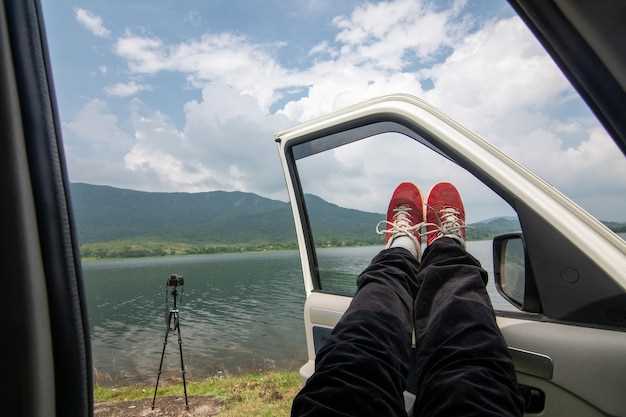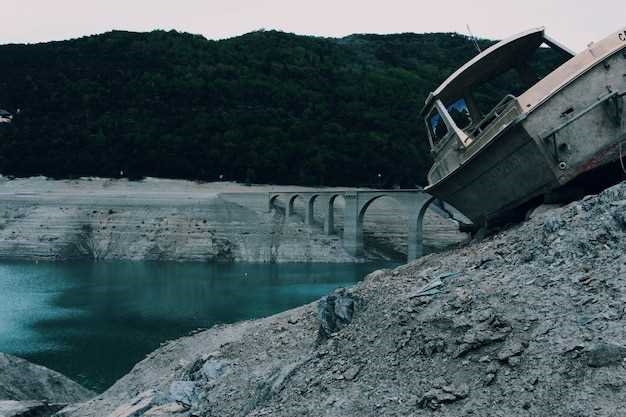Challenges of Driving Up Lake Mountain
Exploring the scenic ascent has always been a captivating experience for adventurers. The route offers breathtaking views complemented by the serenity of the natural surroundings. However, it is not without its intricacies and complexities. One must carefully navigate the paths, especially as the journey progresses to steeper heights, requiring skill and awareness.
Experienced travelers often debate the difficulty of this pursuit. The adventure is not just about the picturesque landscapes, but also involves overcoming physical and mental trials. Each turn and elevation requires precise control and a steady hand, making the expedition both exhilarating and demanding. Simply put, the journey can be both a test of resilience and an opportunity for unparalleled exploration.
For those considering embarking on this quest, preparation is key. Equip yourself with the necessary tools and knowledge to face the unpredictable conditions that may arise. The journey may present various obstacles, yet the reward of reaching the summit with a panorama of unspoiled beauty is unmatched. It ultimately becomes a conquest of both nature and self.
Weather Conditions and Road Safety
Navigating through elevated terrains often presents unique obstacles. The atmospheric conditions at higher altitudes can be unpredictable and more severe than in the lowlands, significantly impacting the safety of the journey. It’s essential to be prepared and understand how various weather patterns can affect the route.
Understanding the Impact of Weather

Elevation can cause temperatures to drop drastically, leading to unexpected snowfall or icy roads. Fog and low visibility are common, making it difficult to see potential hazards. Rain can turn pathways into slippery surfaces, increasing the risk of skidding. These elements necessitate a cautious approach to ensure a safe ascent and descent.
Precautionary Measures
To mitigate the risks posed by harsh weather, it is crucial to undertake specific safety measures. Equip your vehicle with appropriate tires for seasonal conditions, ensure windshields and headlights are clean and functioning, and always check weather forecasts before embarking on the trip. Defensive techniques, such as reducing speed and maintaining a greater distance from other vehicles, can further enhance safety.
| Weather Challenge | Safety Measure |
|---|---|
| Snow and Ice | Use snow tires, drive slowly, keep chains handy |
| Fog | Use fog lights, reduce speed, increase following distance |
| Rain | Ensure wipers are functional, slow down, maintain tire traction |
Necessary Equipment for the Journey
When planning an expedition through demanding terrain, it is essential to be properly equipped to ensure both safety and success. In this part, we will detail the fundamental gear you need to bring for a smooth voyage.
Personal Safety Gear
Your well-being should be your highest priority. Start with a reliable first aid kit that includes bandages, antiseptics, and any personal medications you might need. Additionally, make sure to wear appropriate clothing such as sturdy boots and layers that can adapt to changing weather conditions. Don’t forget to pack a high-quality flashlight or headlamp with extra batteries, as visibility could be an issue in certain areas or times of the day.
Navigation and Communication
A successful journey relies heavily on knowing your route and being able to communicate effectively. Utilize a GPS device or map to navigate unfamiliar paths accurately. To stay connected, especially in remote areas, bring a fully charged mobile phone and consider carrying a portable charger or power bank. Additionally, walkie-talkies can be of great advantage if traveling in a group, providing an alternate means of communication if cell service is unavailable.
Driver’s Experience and Preparation

Exploring the steep terrains requires meticulous planning and a wealth of hands-on knowledge. Ensuring a safe and enjoyable journey necessitates accurate assessment of one’s capabilities, vehicle condition, and the overall preparedness for the unpredictable elements that may come your way.
Assessing Skill Level

One of the first steps in preparing for such an adventure is evaluating your own skill level. Understanding personal limits is crucial. This includes familiarity with the vehicle’s handling, response time in unexpected situations, and overall comfort with varying weather and path conditions. Confidence and competence stem from recognizing both strengths and areas needing refinement.
Vehicle Checks and Maintenance
Thorough vehicle inspection is paramount. This involves checking tire pressure, brake functionality, and fluid levels–elements vital for maximizing traction and control. Ensuring the vehicle’s reliability reduces the risk of mechanical failures that could compromise safety. Additionally, carrying essential tools and spare parts can prove invaluable in case of minor issues.
By combining personal proficiency with comprehensive vehicle readiness, enthusiasts can enhance both the safety and enjoyment of their expedition. Proper preparation minimizes risks and transforms the adventure into a memorable experience.
